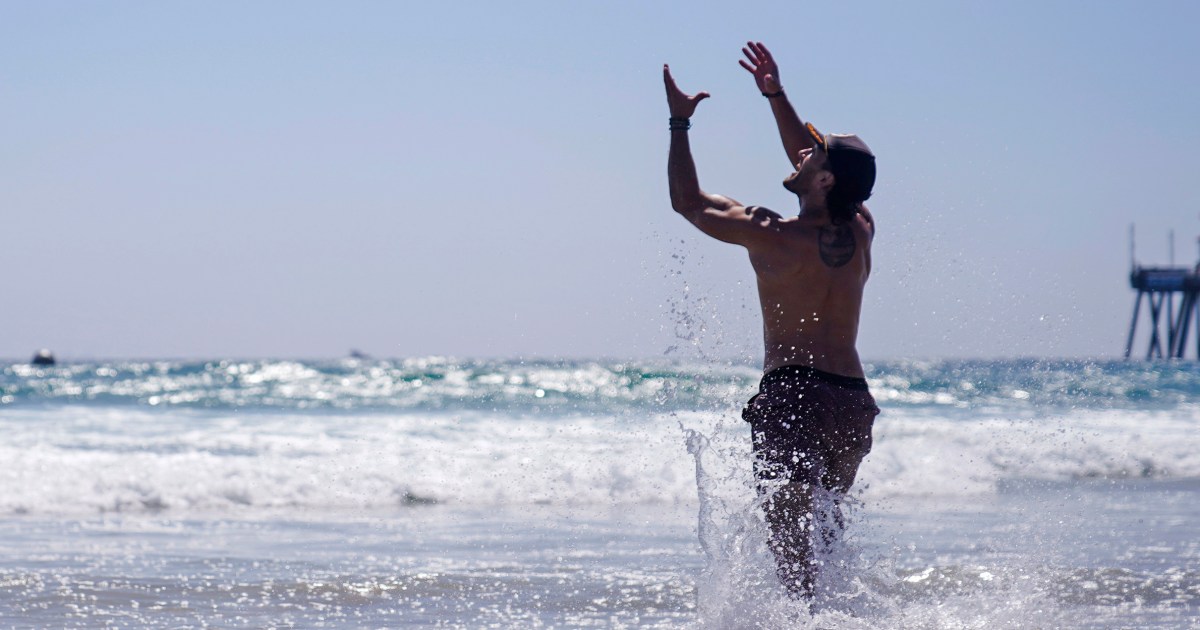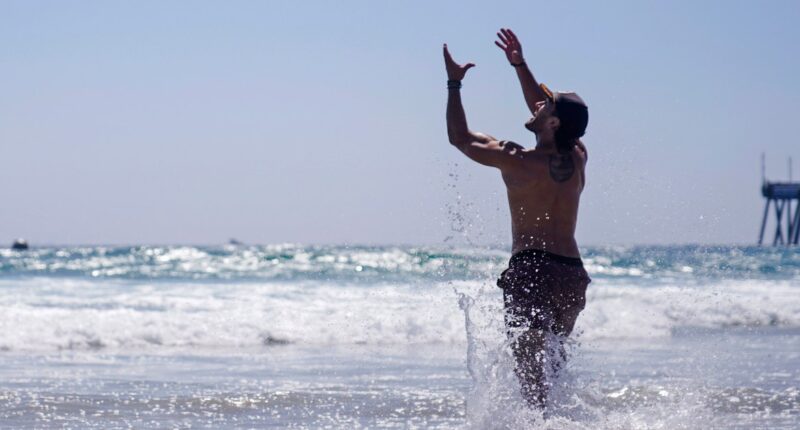
An intense marine heat wave has developed off the U.S. West Coast, pushing sea surface temperatures more than 5 degrees Fahrenheit higher than normal.
The expanse of warm water in the Pacific Ocean, being tracked by the National Oceanic and Atmospheric Administration, first formed and started growing more than 1,000 miles offshore in May. In recent weeks, changing wind patterns have altered the ocean’s circulation, pushing the warm water to the coasts, said Andrew Leising, a research oceanographer at NOAA’s Southwest Fisheries Science Center.
“There’s a big swath of water that’s over 4 degrees Celsius [7.2 degrees F] above normal, and it’s like a few hundred miles off coast, but that’s not that far,” he said. “That could reach the coast in the next week or so.”
The Pacific’s waters that are hotter than usual add to global sea surface temperatures that have repeatedly shattered records over the past five months. Parts of the North Atlantic, the Caribbean Sea and the Gulf of Mexico have been exceptionally warm, with waters off the coast of Florida topping 100 degrees F multiple times last month.
The exceptional warmth of the world’s oceans have, in some ways, mirrored long and brutal heat waves that have unfolded across almost all continents — including in South America, where it is currently the middle of winter.
Marine heat waves are not altogether uncommon, but scientists track these events closely because warmer-than-usual ocean temperatures can fuel extreme weather, accelerate the loss of polar ice and exacerbate rising sea levels.
Researchers are also concerned about the health of the world’s oceans because these bodies of water are crucial for the planet’s ability to store heat. Studies have found that the oceans have absorbed about 90% of the heat trapped on the planet from greenhouse gas emissions since 1970.
As such, when oceans heat up, there can be far-reaching consequences.
The extent of the current marine heat wave in the Pacific remains to be seen, but Leising projected that it could end up being the second- or third-most powerful heat wave on record for the region.
He added that the marine heat wave will likely dissipate this fall but said there are some unknowns that muddy the forecast. The main wild card, he said, is the potential influence of El Niño.
The return of El Niño conditions this year is expected to increase average air and sea temperatures around the world, compounding background warming from climate change. El Niño is a natural climate cycle characterized by warmer-than-usual waters in the central and eastern tropical Pacific, which can have a significant effect on rainfall, hurricanes and other extreme weather.
Leising said it’s not yet clear what impact El Niño will have on ocean temperatures for the remainder of the year but added that in 2014, when a vast and lengthy marine heat wave that came to be known as “The Blob” simmered in the northeast Pacific, it occurred during an El Niño event.
“So there is a hypothesis that El Niño may be able to affect atmospheric patterns in such a way that it could actually reinforce and sustain this current heat wave,” he said.
That could have enormous implications for marine ecosystems and fisheries. Warm waters tend to fuel the growth of harmful algal blooms that can be toxic to humans, birds, fish, shellfish and marine mammals, Leising said. A recent die-off that littered huge amounts of dead fish on the beaches of a town on northern Mexico’s Pacific coast was blamed on a toxic algae bloom, The Associated Press reported.
Algal blooms can affect harvests of razor clams, mussels and even Dungeness crabs, he added.
“That’s a big one, because Dungeness crab is a huge West Coast fishery,” Leising said.
If warmer-than-usual waters persist, these conditions could also affect the migration patterns of sea life, including salmon and whales.
Such impacts could be widespread and long-lasting, Leising said.
“This is pretty severe,” he said. “I don’t really expect it to become as severe as the 2014 Blob, but it’s still going to be impactful.”
Source: | This article originally belongs to Nbcnews.com










